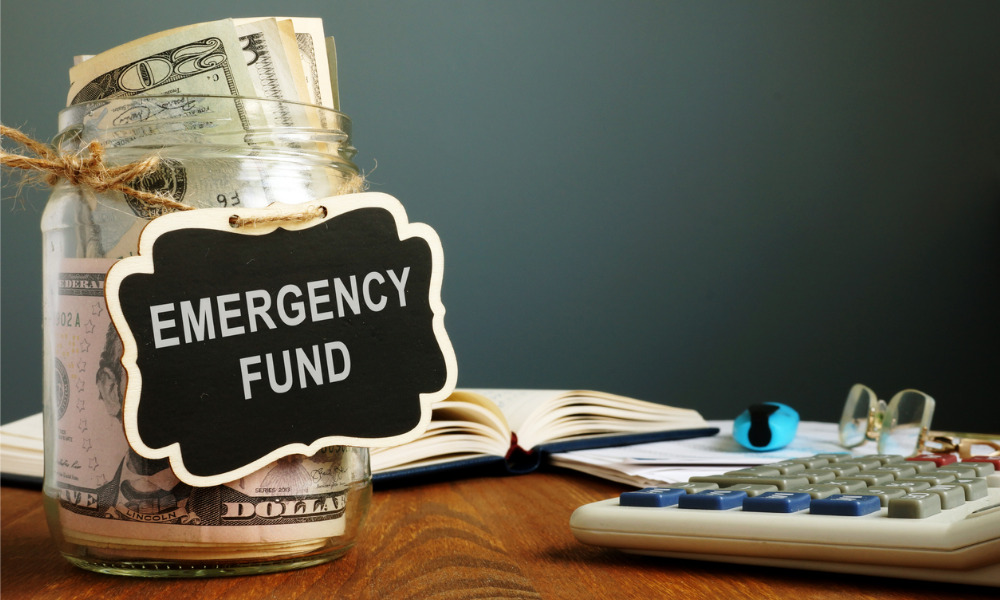Develop a new habit now to help later: check budgets, set goals, and set money aside for a 'rainy day'

One of the basic things that all financial advisors will tell you is that you need an emergency fund to see you through a ‘rainy day’. Well, we’ve had a deluge during this pandemic, so more people are setting up emergency funds.
What is an emergency fund?
An emergency fund is a sum of money that is set aside so you can easily access it if you have an emergency. That could include paying unexpected bills or everyday essentials if your income suddenly drops or disappears. The fund provides a financial safety net, so you don’t have to dip into your long-term savings or retirement fund or rack up debt if you’re suddenly faced with one of these possibilities.
The key here is to remember that emergency funds are only for emergencies. Don’t withdraw it for a holiday or even new tires. You want this money to be there to cover your essentials. That could include:
- losing your job – or taking a pay cut
- a major home repair, such as from flooding or a tornado
- sudden illness and any related medical or dental expenses
- major car repairs
Why is an emergency fund important?
If you can maintain a fund, then you will be more easily able to navigate some of life’s unpredictability – and the expenses that come with it. It means that you won’t have to cut out essential expenses while navigating those rough waters. If your dire circumstances continue for awhile, you’ll also have time to find new income or change more fixed expenses – such as housing.
It’s never too soon to start an emergency fund. Having one means you can:
- handle unexpected expenses without going into debt
- avoid high-cost loans
- retain financial control
- have peace of mind, even if your financial circumstances change in an instant.
How much should your emergency fund be?
Most experts will conservatively recommend that you save at least three to six months of salary in case you have a sudden loss of income. You could just save three to six months of your household expenses. But, given what we’ve seen in the pandemic, the conservative estimate is probably safer to build you a create a larger safety net for you.
While it may feel daunting to save so much, you’ll be glad you did if ever hit those financially rocky shoals.
What steps can you take to build an emergency fund?
- Figure out your monthly budget and calculate how much you’ll set aside
Start by laying out your monthly budget. How much do you spend on everything you do in your life? It may take a little time to sort that out, but once you do, look at what you “need” (essential) versus what you “want” (non-essential).
Can you cut back some “wants” to start setting money aside to buy that long-term peace of mind? You can even do simple things like make your coffee at home instead of buying it, taking your lunch to work instead of buying it, or using public transit rather than your car. It will all help you reach your goal.
Just start looking at your expenses and habits, and you may be surprised by how much you can save.
Once you’ve decided to trim, you can start small. It may only be $10 to $50 a week, or it might be $500 to $1,000 a month. Either soon begins to add up when you start to set it aside.
Pick a realistic number to save, and then make the adjustments to stick with it. It can also be a small amount now and more later. But, you’ll be glad you have made the effort if you ever run into financial trouble.
- Open a savings account
Separate your emergency fund from your daily funds so you can start to develop the fund and grow it.
Consult your financial institution to see what kind of account best serves you. It would be good if you:
- pay low, or no, transaction fees
- can withdraw your funds without paying a penalty, and
- earn interest on the money you save, so that it can keep working for you.
- Set a realistic goal
It can take months, or even years, to accumulate that six months of emergency savings but, don’t worry: that’s normal, and what’s most important is that you start.
If, initially, you can only save a little from your budget, don’t get discouraged. Datebook a regular review – maybe every six months – to see if there are other expenses that you can cut to dedicate more to your emergency fund. You may find there are as you become more mindful of your spending, and what is a “need” versus “want”. It will also help when you start to see the money accumulating in the fund.
- Make it a habit
Once you start, and stick with it, adding to this saving account will become a habit. Don’t touch the fund for anything but dire circumstances, and watch the money grow.
If you follow these simple basics, you’ll be surprised at how much you begin to accumulate. Once you reach your goal, you may even decide to increase it, so you have an ever larger cushion for the next pandemic.



